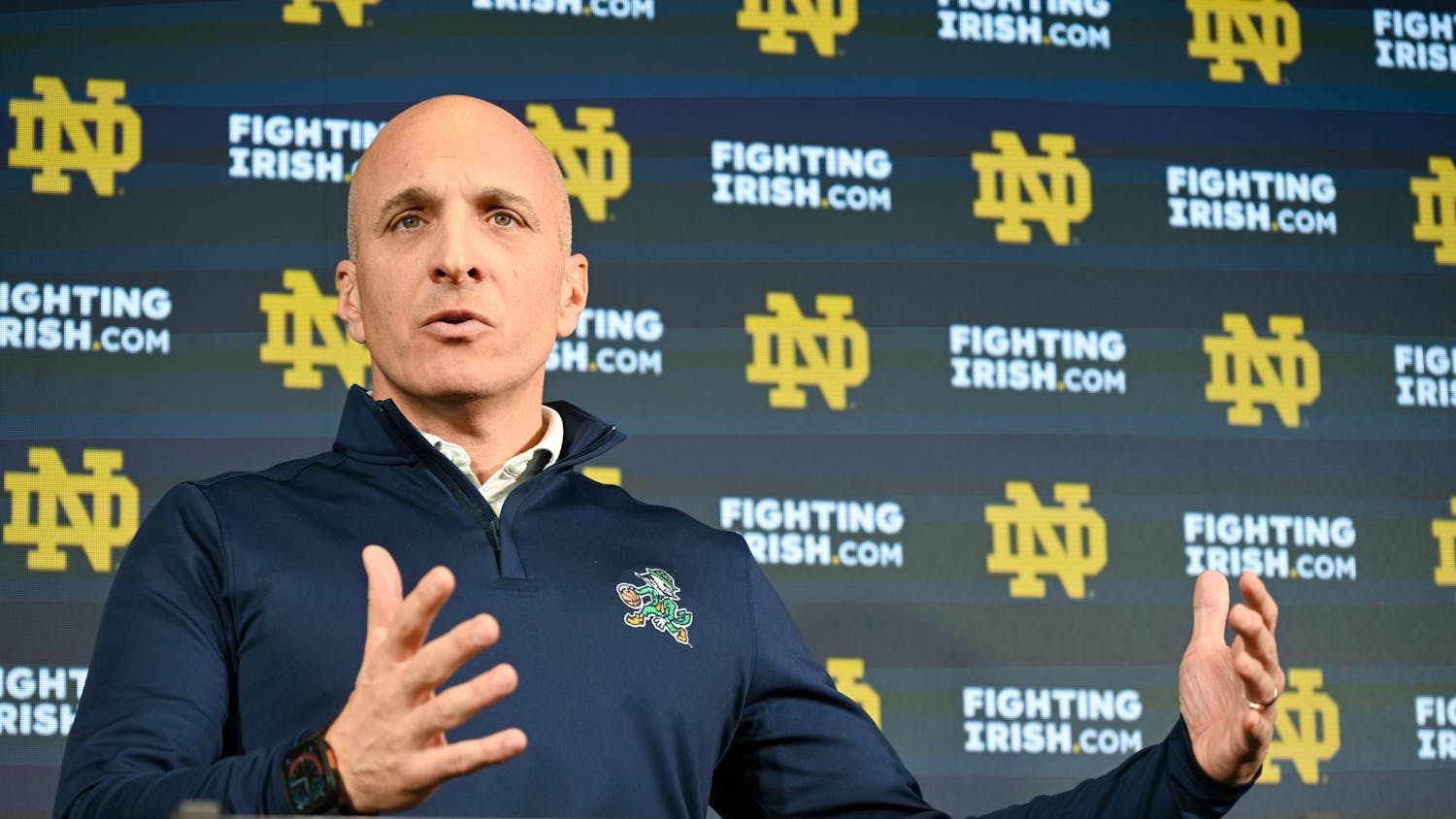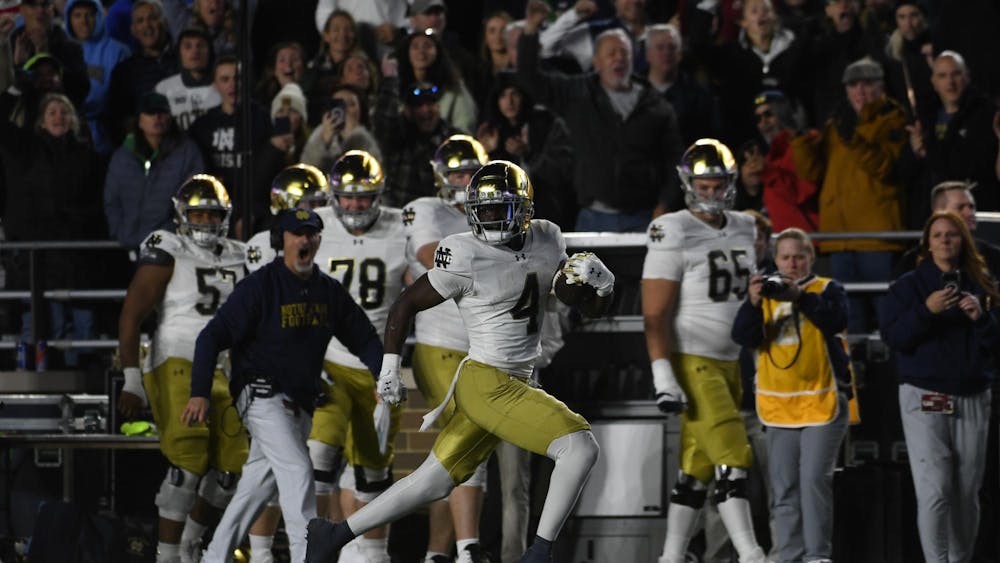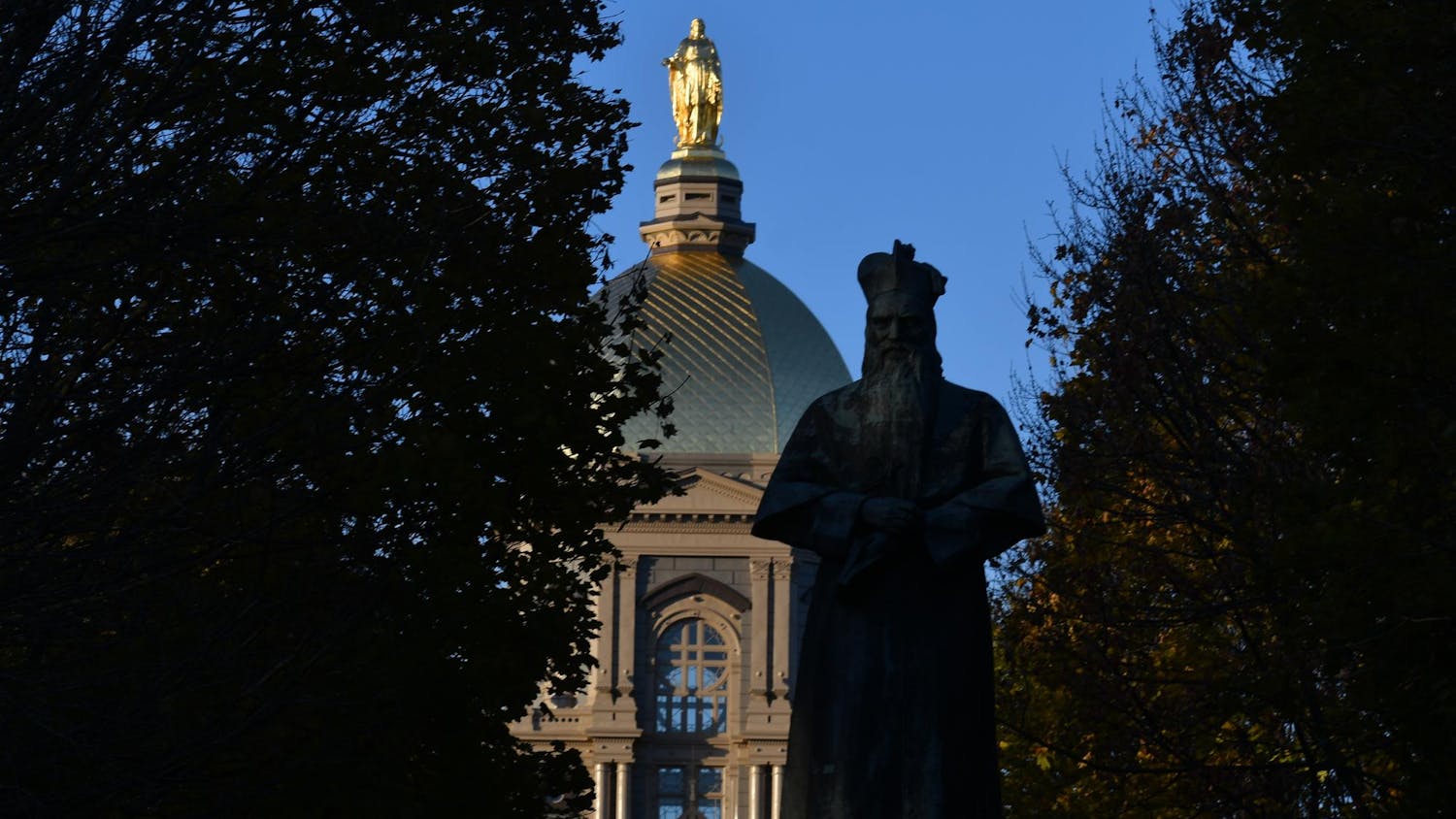In the whirlwind that has been Notre Dame football from 2016 and beyond, the Irish have fielded a motley crew of running backs. From speedy backs to power backs to receiving backs and everything in between, Notre Dame Stadium has seen its fair share of playmakers in the backfield. And now, after the injury of junior running back Jafar Armstrong, it’s time for Tony Jones Jr.
Notre Dame has produced some great running backs, no doubt. Jerome Bettis and Rocky Bleier come to mind. But in more recent history, especially in the Brian Kelly era, Notre Dame hasn’t made its mark as “Running back U.” At least not in the way a program like Georgia has been. And most of that is because it seems to lack a certain identity at running back. Unlike Georgia with a go-to physical back like Nick Chubb, or Stanford with a speedster like Bryce Love or Ohio State with an all-around back like Ezekiel Elliott, the Irish have turned to rotations of backs who each bring something to the table. But within each rotation, there has been that go-to guy — the Adams or the Williams — who you can count on for a break-out run to the house at some point. And both Adams and Williams were role-players within a rotation before they earned that go-to status.
Four games into the season, the Irish seem to be without a coherent running back identity. But with the injury of Armstrong, perhaps Jones is the next man up, the next one to carry the baton like Williams and Adams did.
Jones has shown glimpses of brilliance, posting a solid performance against Louisville in week one and a dominant game against Virginia last week, which was crucial in light of the passing attack’s shortcomings.
He might not seem to fit that mold of the go-to back, and his highlight tape might not be as fancy as that of Dexter Williams, but a lot of the signs point to Jones as a consistent force in the offensive backfield, a force that will be imperative for a successful Notre Dame season. Jones is powerful, a solid blocker, and most importantly, he’s tough as nails. That’s a combination that can lead to success in any offensive scheme.
And ironically, although many in the Notre Dame football circle still may not see Jones as “that guy” for the Irish, Jones never really saw himself as that guy for Notre Dame, either. When asked about why he chose to attend Notre Dame to pursue his football career, Jones was frank.
“I never liked [Notre Dame] when I was growing up,” he said. “My mom made me take a visit here, because she heard it was good on the field and off the field. And then, I just came here, and I just fell in love, and I committed the next day.”
But his decision led to some fantastic memories and experiences, both for him specifically and for others who he had the chance to witness. Jones said that two plays distinctively stand above the rest in his time at Notre Dame.
“My favorite play I was not in for was Miles Boykin’s catch vs. LSU [in the 2018 Citrus Bowl]. My favorite play I did was probably the USC game [in 2018] because it was my birthday, and I scored on my 21st birthday, and we won the game. So that was dope,” he said.
But Jones has come a long way to get to where he is today as starting running back. Jones was a mainstay on the scout team his freshman year, finishing the season as one of nine scholarship freshmen who did not see the field. In his sophomore year, Jones showed signs of promise, rushing for 232 yards on 44 carries and appearing in 12 games. But still, he was mostly a role player, and he still showed signs of immaturity after a season on the sidelines. In his junior season, Jones came into his own a bit, posting 392 total yards and three touchdowns, but he certainly was not yet in the form he is today.
Jones attributed his development to personal growth and an increased understanding of the ins and outs of the game.
“When I first started, I would say I was young and kind of just young and stupid, I guess, to a certain extent,” he said. “But now, I think I’m more mature. I understand the game more.”
And luckily for Jones, he was prepared by a number of notable backs he had the chance to play under, like Dexter Williams and Josh Adams, who he said taught him an important mindset.
“Stay ready, stay humble, stay hungry and just stay consistent and never get comfortable,” Jones said.
Now coming into his own as a leader, Jones has put that advice to good use. Since Armstrong’s injury, Jones has said he’s stepped up on and off the field.
“I’m not a vocal guy. I’m more lead-by-example, but since [junior running back] Jafar [Armstrong] went down, I’ve had to speak up a little bit,” he said. “And to be honest, I think it helped my game a little bit and made me get more hype and get more into the game.”
Having come from a large running back rotation, Jones is very complimentary of backs who play under him today.
“They’re dogs, and they’re hardworking, and they’ll do anything for the team, and it shows when they play,” he said. “They play with their heart.”
Jones was similarly confident about the offense’s potential this season. He said the Irish are poised to expose defenses on a number of fronts.
“[The] sky is the limit,” he said. “You can pick your poison, if you want me or Jafar, or you can get the other running backs. You can get [senior wide receiver] Chase [Claypool], you can get [junior tight end] Cole [Kmet], you can get [junior wide receiver] Mike [Young] , [graduate student wide receiver Chris] Finke, [senior quarterback Ian] Book, it doesn’t matter — you pick your poison.”
Whether or not Jones will come into his role as Notre Dame’s go-to running back in his potentially final season at Notre Dame is yet to be seen. But as of now, as he grasps the opportunity, Jones is happy to be where he is.
“It’s a dream come true. Just to start at a prestigious school … and I think it’s just showing that my hard work is paying off. And that I’m that much closer to my goal in life,” he said.
Read More
Trending









